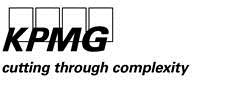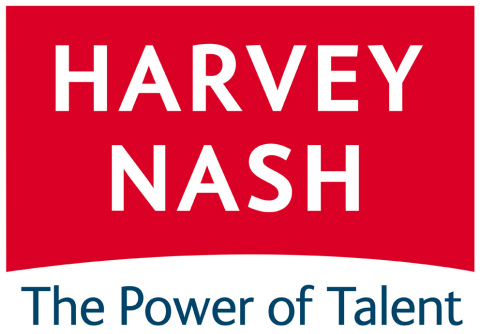NEW YORK--(BUSINESS WIRE)--Digital innovation is dominating IT, but many companies are struggling to manage it, according to the Harvey Nash 2015 CIO Survey in association with KPMG. The pace of digital and the race to innovate has left many organizations lacking an enterprise-wide digital strategy and desperately seeking to acquire the right skills. Despite efforts to close the skills gap, this year skills concerns are running one third higher than in 2013. The demand for big data analytic skills has leapt to the No. 1 most-needed skill, skyrocketing to almost six times higher than the next-most-scarce skill, change management.
Two-thirds (66 percent) of CIOs report digital disruption [change resulting from digital technologies that disrupt established business models] as a very significant change to their business, driving them to create new business models and bring new products and services to market faster than ever before.
Globally, large companies report being at a disadvantage when it comes to digital, with only 17 percent of them saying they believe they will do “much better” than competitors in managing digital disruption, compared to 35 percent of small organizations. Only one in 10 CIOs believe their organization will be unaffected by digital disruption in the coming years.
After receiving a record number of responses from nearly 4,000 IT leaders from more than 50 countries and capturing more than a quarter million data points, it is believed this is now the largest survey of IT leadership in the world.
“The speed of technology is what’s driving IT today,” said Harvey Nash USAPAC President and CEO Bob Miano. “Digital disruption is the norm now, so it’s about how fast companies can innovate. Pressure to produce at an accelerated pace is felt across all vertical markets, and has direct ties to the talent war. The industry can’t produce talent fast enough. The pace will only continue to quicken, and the companies on track to win will secure and hold on to talent, be nimble enough to shift quickly, and will reign in digital to manage it in a smart way.”
“The opportunities created by digital disruption to positively impact the business are massive; however, this is part of the problem with digital – Where do I start? How do I start? Can my organization deliver on the promise?” said Matt Bishop, KPMG U.S. Advisory principal and head of its global CIO Advisory practice. “This technology shift is fundamentally different than others we have seen over the last few decades. To capitalize on the opportunity, IT organizations need to ramp up their creativity, learn to experiment/fail fast, find acute business problems to fix using digital and ultimately develop a more nimble operating model.”
Additional key findings from the Harvey Nash 2015 CIO Survey in association with KPMG include:
The Chief Digital Officer growing in prominence, but the role is still evolving
- The role of the Chief Digital Officer (CDO) is growing in importance. Seventeen percent of CIOs now work with a CDO, up from only seven percent last year. An additional five percent of respondents said they will hire a CDO in the next several months.
- Marketing departments that exclusively own digital is down to 24 percent, from 40 percent last year. Conversely, the number of IT departments that own digital is on the rise, up to 18 percent, almost doubling its influence from last year.
Accessing skills from outside the organization
- Half (50 percent) of CIOs report they are increasingly using outsourcers to supplement skills they cannot find in house. This compares to just 25 percent of CIOs who are looking to their outsourcers to save them money, suggesting an evolving role for outsourcers.
- In 2015, six out of seven CIOs will increase their outsourcing spend.
- Almost half (46 percent) of CIOs plan to increase their investment in offshoring this year.
Top CIO operational priorities
- Business intelligence and analytics made the biggest jump up the priority list compared to last year, with almost half (47 percent) setting it as a top priority.
- Increasing operational efficiencies topped the list of CIOs’ operational priorities this year, at 61 percent.
- Cost-cutting dropped in importance by 16 percent, compared to 2013.
Women in IT stalemate
- The lack of women in IT has received significant media and political attention for several years, yet the proportion of women in IT leadership roles remains stagnant year after year.
- Globally, the number of women in IT leadership positions – CIO, CTO or SVP title – is down two percent from 2013, reporting in at a mere six percent this year. In the U.S., women represent 12 percent of IT leadership, up from seven percent in 2014.
CIOs are satisfied
- Despite the constant challenges, complexities and changes, IT leaders face, job satisfaction is climbing towards historic highs. The proportion of U.S. CIOs who plan to move jobs in the next 12 months is 19 percent, down from 23 percent in 2014. However, almost one in four U.S. CIOs (39 percent) expect to be in a new role by the end of 2016.
Cyber security represents a very real threat
- Globally, one in four CIOs (25 percent) reported their companies had to deal with major IT security incidents in the past 12 months. In the U.S., that figure is six percent lower, at 19 percent.
- Only 23 percent of respondents are “very well” prepared, down six percent from last year (29 percent).
For more information about the survey and to request a full copy of the results, please visit www.harveynash.com/ciosurvey or email awarren@clearedgemarketing.com.
About the Survey
The Harvey Nash CIO Survey 2015, in association with KPMG, collected data between 6th January and 19th April, 2015, and represents the views of 3,691 technology leaders from more than 50 countries, with a combined IT spend of over $200 billion. Of the respondents, 33 percent identified themselves as CIOs, nine percent as CTOs, 32 percent as director/VP in technology and the remaining 26 percent were spread between a broad range of roles including CEO, COO, CDO and senior executives.
About Harvey Nash Inc.
Harvey Nash Inc. is the U.S. division of the Harvey Nash Group, a global professional recruitment firm and IT outsourcing service provider traded on the London Stock Exchange since 1997. Harvey Nash has helped over half the world’s leading companies recruit, source and manage the highly skilled talent they need to succeed in an increasingly competitive, global and technology driven world. With 7,000 experts in 43 offices across Europe, Asia and North America, Harvey Nash has the reach and resources of a global organization, and it fosters a culture of innovation and agility that empowers all employees across the world to respond to constantly changing client needs. Harvey Nash works with clients, both big and small, to deliver a portfolio of services: IT recruitment, IT outsourcing/offshoring and executive search. To learn more, please visit www.harveynashusa.com. Follow us: www.twitter.com/harveynashusa and www.facebook.com/harveynashusa.
About KPMG LLP
KPMG LLP, the audit, tax and advisory firm (www.kpmg.com/us), is the U.S. member firm of KPMG International Cooperative (“KPMG International”). KPMG International’s member firms have 162,000 professionals, including more than 9,000 partners, in 155 countries.




